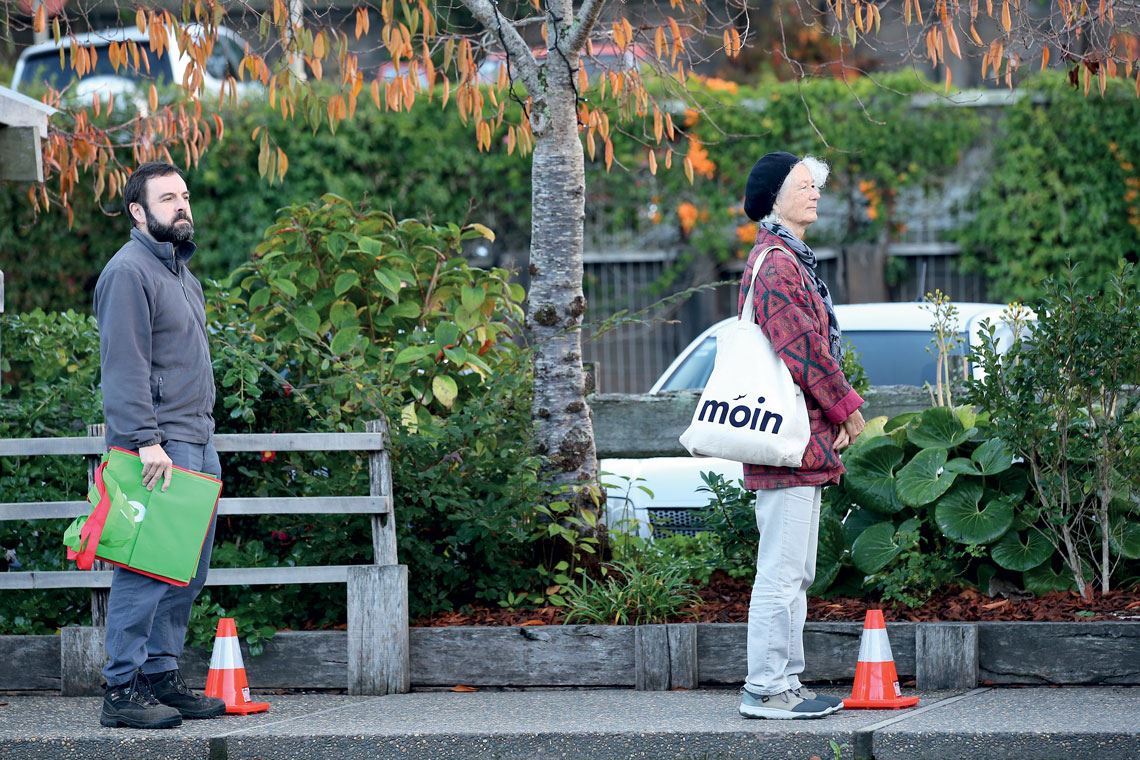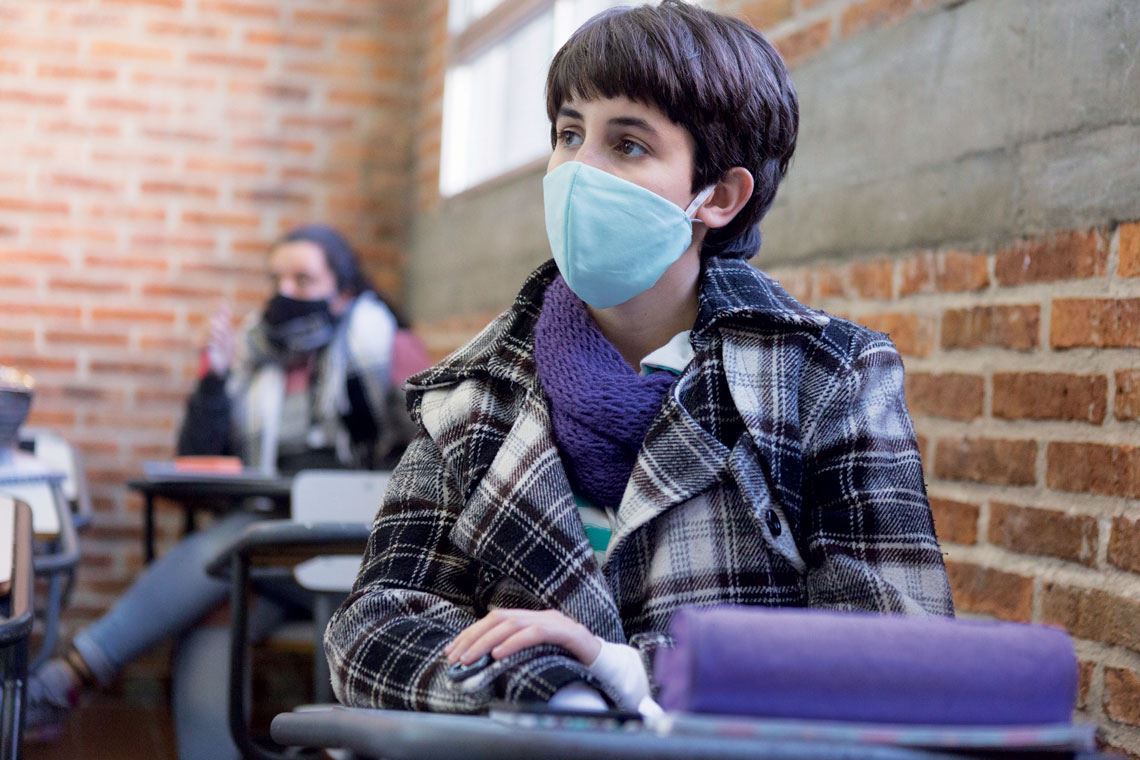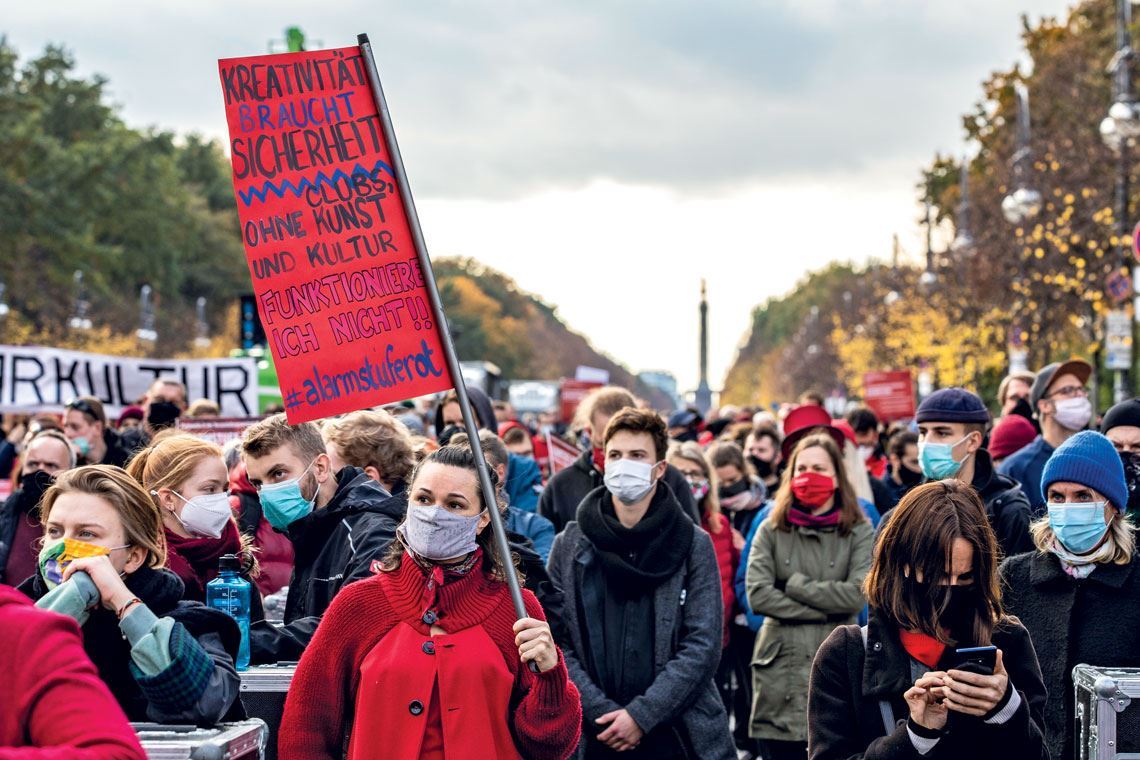In a world where SARS-CoV-2, the virus that causes COVID-19, is far from being put in checkmate, there are remarkable differences between how different countries have been affected by the pandemic. While some have suffered high death rates, temporary health system collapses, and overwhelmed funeral services, others have managed to avoid significant casualties. The range of strategies used to combat the novel coronavirus, which has caused the death of more than 1.2 million people worldwide in just a few months and led to the worst global economic recession in decades, have been analyzed in depth by epidemiologists, researchers from various fields, authorities, and decision makers. What were the factors that allowed some countries to adopt more successful measures?
“Some countries clearly did well while others did poorly, but it is not possible to come up with a trivial ranking,” Dr. Martin McKee, a professor of European public health at the London School of Hygiene and Tropical Medicine in England, told Pesquisa FAPESP. “We have to take various factors into account—the risk of imported cases, for example. Some countries with a small number of cases have few visitors, like certain Pacific islands.”
One island nation in the Pacific Ocean, New Zealand, is often cited by experts as a success. “This is an example of a country that has achieved COVID zero. That doesn’t mean there are no cases, but that there is no sustained domestic transmission of infection,” says McKee. According to the doctor, SARS-CoV-2 spreads exponentially in the absence of control measures, which is why reducing the virus’s circulation to the lowest possible level is so important. In addition, he points out, it is essential to identify, test, trace, isolate, and treat those infected. “The best systems treat it as an investigation; try to identify the source of the outbreaks and take action in those locations.”
According to Johns Hopkins University, USA, at the time this report was written in mid-October, New Zealand, with a population of five million, had recorded 1,864 cases and 25 deaths from the disease. With a four-level alert system, the country earned plaudits for the speed of its interventions, the decision to quickly close its borders, and the strong leadership shown by Prime Minister Jacinda Ardern.

Fiona Goodall / Getty Images
Scenes from the pandemic: customers practice social distancing in line to enter a supermarket in Auckland, New ZealandFiona Goodall / Getty ImagesAccording to the World Health Organization (WHO), strict social-distancing measures were imposed and the country’s testing, isolation, and contact tracing procedures were followed vigorously. A lockdown was instituted on March 25, during which only essential services continued to function. The borders had been closed to nonresidents the week before.
The WHO highlights the importance of clear and regular communication with the public and measures to mitigate the economic impact. “New Zealand certainly benefited from being a high-income, island country with an advanced health system,” said Dr. Takeshi Kasai, the WHO’s regional director for the Western Pacific, in a statement released by the organization in mid-July. “But they didn’t take anything for granted. They worked concertedly to limit and stop COVID-19 on their shores.” The country began gradually reopening in late April, and in June it moved to the less strict alert level 1, lifting restrictions on movement, meetings, and services. A second wave was declared under control in early October.
“The key to responding well was to act early and follow the recommendations of scientists and healthcare professionals,” epidemiologist Hassan Vally, a professor of public health at La Trobe University in Australia, told Pesquisa FAPESP. He also highlighted Taiwan, Vietnam, and Australia itself—where a curfew was implemented from 8 p.m. to 5 a.m. in Melbourne—as examples of nations that have successfully fought off SARS-CoV-2.
“Strong leadership and public confidence in the government are the most important factors in controlling the virus.” Vally noted, however, that even in those countries, mistakes were made. Australia, he says, was wrong to use hotels to quarantine people returning home to the country. Flaws in this procedure resulted in the staff who worked at these establishments becoming the primary focus of a second wave.

Chung Sung-Jun / Getty Images
Agents disinfect a street in Seoul, South KoreaChung Sung-Jun / Getty ImagesTracing the virus
According to public health doctor Ivan França Junior, from the School of Public Health at the University of São Paulo (USP), two of the most successful approaches adopted since March are social distancing and aggressive, sustained testing and tracing, including treatment for those who test positive. “The most extreme form of social distancing is the lockdown,” he points out. “But there are intermediate policies, such as maintaining 1.5 meters of space between people, wearing masks, and avoiding touching the T area of the face [eyes, nose, and mouth].”
With 51 million inhabitants, South Korea was one of the first countries to register a COVID-19 outbreak and made headlines for quickly containing the virus without shutting down the economy or restricting the movement of the public. Five years earlier, in 2015, the South Koreans faced an outbreak of Middle East Respiratory Syndrome (MERS), caused by another coronavirus, which resulted in 185 confirmed cases, 38 deaths, and losses of US$2.6 billion from a decline in tourism. After recording more than 500 new cases of SARS-CoV-2 per day in early March, the country has drastically reduced the infection rate with rigorous testing and tracing, followed by early isolation and treatment of those infected.
As the outbreak escalated, 600 testing centers were set up, which conducted up to 20,000 tests a day. The government worked in partnership with the private sector and listened closely to the scientific community. “The main reason for South Korea’s success is large-scale testing with RT-PCR molecular tests, which detect the presence of the virus in the person’s body when it is still contagious, followed by contact tracing and isolation of those infected,” says physicist Vitor Mori, a member of the COVID-19 BR Observatory, a group of researchers dedicated to studying and understanding the disease. “In Brazil, I’ve seen many places making the mistake of blocking the entry of people who have received a positive result from a rapid serology test, which detects the antibodies produced weeks after infection, when the person can no longer transmit the virus,” points out Mori, who is currently on a postdoctoral fellowship at the University of Vermont, USA.
In South Korea, hundreds of people have been employed to track cases of the disease based on a range of information sources, including credit card transactions, which can be used to identify where people have been, and monitoring foot traffic—measures considered controversial as potential risks to the rights and privacy of citizens. By mid-October, the country had recorded 430 COVID-19 deaths.

Ernesto Ryan / Getty Images
Students wear masks at school in Montevideo, UruguayErnesto Ryan / Getty ImagesVietnam, which borders China for more than a thousand kilometers and has 95 million inhabitants, registered just 35 deaths from COVID-19 by mid-October, with just over 1,100 cases. Its early detection and containment strategy are highlighted by experts as contributing factors to its success against SARS-CoV-2 so far, facilitated by the country’s strong and authoritarian central government, which was able to respond very quickly.
Prime Minister Nguyễn Xuân Phúc described the situation as a war, calling on the population to fight against the “enemy.” Warnings were issued in villages using a loudspeaker system that has remained in place since the Vietnam War (1955–1975), telling residents that they must wear a mask, wash their hands, and maintain social distancing to fight the virus.
The national lockdown was lifted on April 23, after a contact-tracing policy that far exceeded those implemented in most other countries. While Germany, another country that has been praised for its response to the pandemic, records infected individuals and their direct contacts, Vietnam also traces the second, third, and fourth points of contact with those infected. The public were highly compliant. The country’s tracing application was downloaded by 20 million people in just four weeks.
By mid-October, Germany had recorded almost 10,000 deaths from the disease, but with France and Italy registering three times as many deaths, and the United Kingdom with four times as many, the country is seen as a successful example of how to fight the virus. Investing 11% of its Gross Domestic Product (GDP) in health, Germany began the pandemic with the major advantage of having robust public and private healthcare systems and a high number of hospital beds, including in intensive care units (ICU).

Maja Hitij / Getty Images
In the midst of a second wave of infections, German workers take to the streets to demand government assistanceMaja Hitij / Getty ImagesThe government formed an interministerial group to manage the crisis and rejected the idea of a complete lockdown. The country invested in free testing and contact tracing from the start and paid particular attention to the elderly population, limiting transmission in care homes, which probably contributed to its low death rate compared to its European neighbors. The Germans were also pioneers in RT-PCR testing. Social-distancing measures implemented in March were relaxed the following month, but the government again imposed restrictions in October due to a second wave of infections that saw the number of cases rising exponentially across Europe.
In South America, there has been a stark difference between Uruguay and its neighboring countries of Brazil and Argentina, which are among the world’s worst affected in terms of COVID-19 cases and deaths. In a preprint article (published prior to peer review), Uruguayan scientists claim to have developed a molecular SARS-CoV-2 test in the early stages the pandemic, the methodology of which was given to research institutes, public hospitals, and academic laboratories around the country, helping to create a national network of diagnosis centers. As a result, it did not suffer from the same lack of tests as Brazil and other nations around the world.
“Uruguay’s strategy was based on a strong synergy between the national health authorities and the scientific community, which responded quickly to develop their own RT-PCR tests,” highlighted the article. According to the authors, this network of COVID-19 diagnosis centers carried out most of the country’s molecular tests, which helped to reduce domestic transmission. The fact that Uruguay is a small country with a high-quality universal health system and a population of around 5.4 million is also highlighted as a reason for its success in fighting the virus. According to the Worldometers website, the country had recorded 15 deaths per million inhabitants in mid-October, while Brazil had 709 deaths per million and Argentina 542.
Researcher Elize Massard da Fonseca, from the Department of Public Management at the Getulio Vargas Foundation’s Business School (EAESP), is helping to compile a book currently being edited by the University of Michigan, USA, in which experts compare how different countries have tackled the pandemic.
The authors plan to examine four variables: social policy for managing the crisis, political regime (democratic or authoritarian), formal political institutions, and the state’s capacity in public administration. “Maybe the book will explain why some countries chose to respond more quickly and were better coordinated,” says Fonseca. “Our purpose is not to point out which approaches are better or worse, but to explain why countries chose to make the decisions they made.”
The lessons could come from unexpected places—certain African countries, for example. Senegal, Liberia, and Rwanda have all responded well to the pandemic, with death rates of below 20 per million inhabitants. While it is possible that cases and deaths are being underreported, horror scenes like those seen in Ecuador, Brazil, New York, and Italy have not occurred in these countries.
A younger population, differences in immune response, and genetic factors are all potential factors behind the generally low mortality on the African continent, but a better public health response, such as the use of masks, could also have contributed. “Countries that have recently confronted Ebola may have put systems in place capable of controlling other infections, and may well have acted more strongly to mobilize community support against the novel coronavirus,” suggests McKee. Recent experience fighting epidemics seems to be one particular factor that has helped some countries in the intricate game of chess being played against the novel coronavirus.
With a less restrictive approach, the Nordic country has suffered a similar impact on GDP as its neighbors, but a much higher number of deaths
Having adopted a less aggressive strategy than the other Scandinavian countries, and thanks to comments on herd immunity by its chief scientist, Sweden has been the center of many a debate on how to tackle the COVID-19 pandemic. The authorities never implemented a complete lockdown, instead opting to allow shops, restaurants, and bars to remain open, while schools continued as normal for students under the age of 16—older students in high schools and universities switched to online learning.
The results have been less than impressive. By not limiting public movement, people were allowed to go about their normal life with few restrictions. This relative normality, however, did not improve economic performance in the period, but did lead to a far higher death rate per capita than neighboring countries.
Compared to other Nordic nations, which all imposed lockdowns, Sweden has a much higher COVID-19 death rate, about 10 times greater than Norway and Finland, and five times greater than Denmark. The pandemic’s impact on GDP, however, has not greatly differed so far.
In April, epidemiologist Anders Tegnell of the Public Health Agency of Sweden, the architect behind the country’s pandemic strategy, gave an interview to the journal Nature explaining that the approach was based more on individual responsibility and recommendations rather than rules. “Each country has to achieve herd immunity in one way or another, and we are going to reach it in a different way,” said Tegnell, before it became clear that the virus can be spread by asymptomatic people and that it is possible for people to be infected twice.
“While the other Nordic countries of Denmark, Norway, and Finland all imposed much tougher restrictions during the first wave, by the end of June all four countries had similar levels of restrictions in place as lockdown restrictions were progressively eased,” scientists from the UK’s Independent Scientific Advisory Group for Emergencies (Independent Sage) wrote in a report. “In fact, Sweden’s restrictions were more stringent than those in Denmark, Norway, and Finland over the summer.”
An article published in the journal Science in October reported that Sweden’s strategy came at a high cost, with a mortality rate close to that of the USA, whose response has been labelled slow and ineffective. With more than 8 million cases of COVID-19 and 220,000 deaths by mid-October, the approach taken by the world’s largest economy is seen by many as a perfect example of how not to fight the pandemic. From failures in the development of diagnostic tests to President Donald Trump’s antiscientific stance and denials, experts highlight a series of errors that have propelled the country into the troublesome situation it now finds itself in.
While Sweden’s strategy has not gone quite as badly as the USA’s, it has still received criticism. “The consequences for the most vulnerable were shocking. The virus spread freely through nursing homes, where nearly a thousand people died in a matter of weeks,” says the Independent Sage report on Sweden, referring to the initial phase of the pandemic. Sweden’s policies, according to the document, are gradually approaching those of its neighboring countries. A source says the authorities are “silently changing its approach,” increasing the number of tests and no longer recommending not to test children aged between 6 and 16 years old. The use of masks, however, has still not been recommended.
Scientific articles
MORENO, P. et al. An effective Covid-19 response in South America: The Uruguayan Conundrum (preprint). medRxiv. July 27, 2020.
GREER, S. L. et al. The comparative politics of Covid-19: The need to understand government responses. Global Public Health. Vol. 15, no. 9, pp. 1413–16. June 20, 2020.
OH, J. et al. National response to Covid-19 in the Republic of Korea and lessons learned for other countries. Health Systems & Reform. Vol. 6. Apr. 29, 2020.
SHERIDAN, A. et al. Social distancing laws cause only small losses of economic activity during the Covid-19 pandemic in Scandinavia. PNAS. Vol. 117, pp. 20468–73. Aug. 3, 2020.


